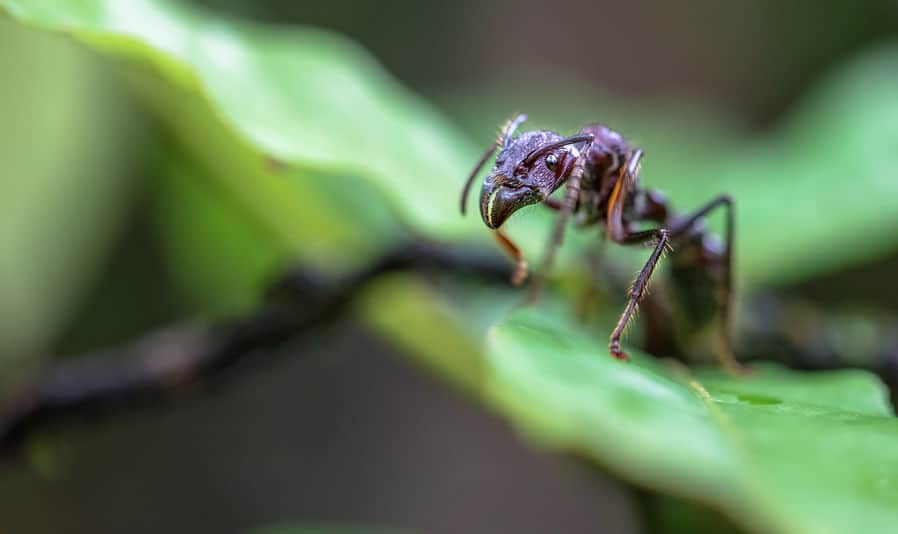Bullet ants, also known as Paraponera clavata, are located in South American rainforest habitats.
How did bullet ants get their name?
Bullet ants are so named because of their powerful sting. It seems that the bullet ant sting was so painful that people thought being stung was like being hit by a bullet. According to the Schmidt insect pain index bullet ants have the most painful sting of all insects. Schmidt described the pain as ‘Pure, intense, brilliant pain. Like walking over flaming charcoal with a 3-inch nail embedded in your heel.’
Where do bullet ants forage?
They forage in tree canopies rather than on the ground. Somewhat uniquely among ants bullet ants prefer to forage up in the canopy rather than on the ground. This may be an evolutionary development that prevents leaving a trail to their nest for predators to follow. They sometimes have their nests in trees, but usually, the nests themselves are at the base of trees.

Do bullet ants live in colonies?
They live in large colonies. Bullet ant colonies are made up of up to 2,500 ants. They demonstrate the ability to adapt and respond to meet challenges facing the colony and work efficiently as a collective.
How do bullet ants communicate sources of food?
They leave a chemical trail to food sources. If a particularly attractive food source is found, as in food high in sugar content, then they will recruit other ants by releasing a pheromone which other ants will follow. Bullet ants mostly forage for sugar sources such as sap and fruit juices. The ant larvae do require protein, however, and bullet ants will prey on other insects such as other ant species to feed them.
Are bullet ant colonies aggressive to other colonies?
Rival colonies engage in mortal combat. One of the biggest threats to bullet ants is other bullet ants. Colonies too close to each other can result in significant battles that can curtail the life of a losing colony. The average life expectancy of a bullet ant colony is around 2.5 years.
Do bullet ants have predators?
There are no known predators that target bullet ants. Their sting perhaps is enough to make them best avoided. A few lizards have been found to eat bullet ants, but they do not appear to seek them out. No doubt they prefer easier prey.
How are bullet ants used by Amazonian tribes?
They are used in ceremonial rites of manhood. Several Amazonian tribes are known to use bullet ants for various rites. Enduring the sting of the ants no doubt is a sure sign as any that a boy has become a man. The ants are placed into cylinders and mats and induced to sting as part of the ceremonies.
Their venom was used to make poison arrowheads
By mixing the venom from bullet ants with other toxins Amazonian tribes were able to create arrowheads with deadly qualities. The venom from bullet ants is not known to have resulted in the death of humans, it is known to be fatal to smaller mammals such as rats, however.
How do bullet ants warn predators to stay away?
They stridulate loudly as a warning. By vibrating their bodies bullet ants are able to create a warning noise that is used to deter predators. It is likely predators have learned over time to associate the noise with the nasty sting and so avoid the ants.
How old are bullet ants?
Bullet ants have been distinct from other ant species for at least 100 million years according to DNA studies. Plenty of time then to have mastered the art of the sting.
(Source: Schmidt – The Sting Factor)
